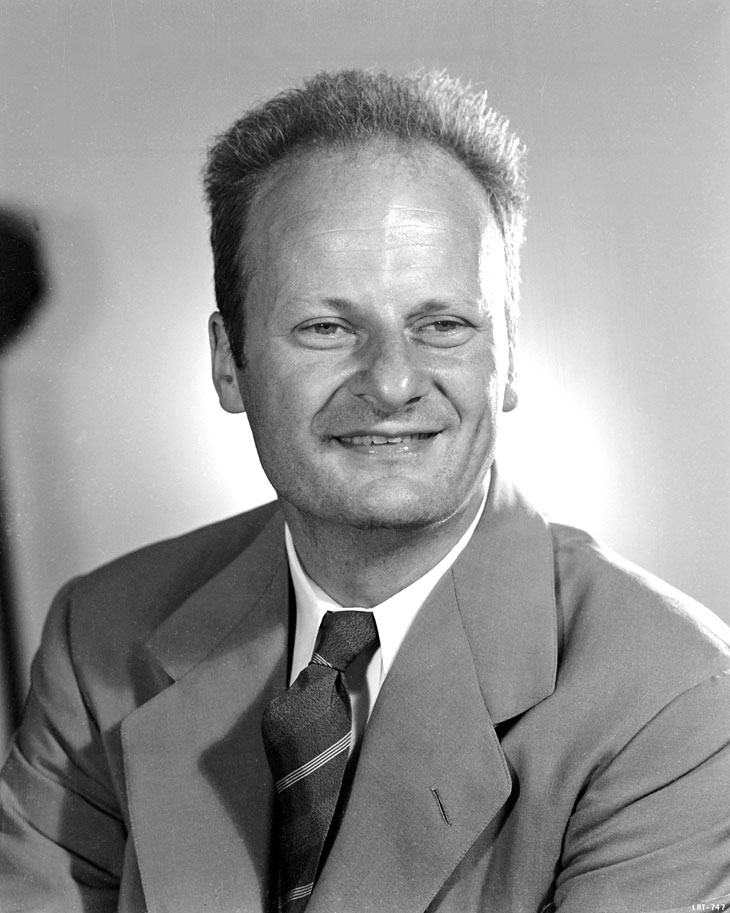|
Schwinger Parametrization
Schwinger parametrization is a technique for evaluating loop integrals which arise from Feynman diagrams with one or more loops. It is named after Julian Schwinger, who introduced the method in 1951 for quantum electrodynamics. Description Using the observation that :\frac=\frac\int^\infty_0 du \, u^e^, one may simplify the integral: :\int \frac=\frac\int dp \int^\infty_0 du \, u^e^=\frac\int^\infty_0 du \, u^ \int dp \, e^, for \mathrm(n)>0. Alternative parametrization Another version of Schwinger parametrization is: :\frac=\int^\infty_0 du \, e^, which is convergent as long as \epsilon >0 and A \in \mathbb R. It is easy to generalize this identity to n denominators. See also * Feynman parametrization Feynman parametrization is a technique for evaluating loop integrals which arise from Feynman diagrams with one or more loops. However, it is sometimes useful in integration in areas of pure mathematics as well. It was introduced by Julian Schwing ... References Q ... [...More Info...] [...Related Items...] OR: [Wikipedia] [Google] [Baidu] |
Loop Integral
In quantum field theory and statistical mechanics, loop integrals are the integrals which appear when evaluating the Feynman diagrams with one or more loops by integrating over the internal momenta. These integrals are used to determine counterterms, which in turn allow evaluation of the beta function, which encodes the dependence of coupling g for an interaction on an energy scale \mu. One-loop integral Generic formula A generic one-loop integral, for example those appearing in one-loop renormalization of QED or QCD may be written as a linear combination of terms in the form :\int \frac\frac where the q_i are 4-momenta which are linear combinations of the external momenta, and the m_i are masses of interacting particles. This expression uses Euclidean signature. In Lorentzian signature the denominator would instead be a product of expressions of the form (k+q)^2 - m^2 + i\epsilon. Using Feynman parametrization, this can be rewritten as a linear combination of integrals of the fo ... [...More Info...] [...Related Items...] OR: [Wikipedia] [Google] [Baidu] |
Feynman Diagram
In theoretical physics, a Feynman diagram is a pictorial representation of the mathematical expressions describing the behavior and interaction of subatomic particles. The scheme is named after American physicist Richard Feynman, who introduced the diagrams in 1948. The calculation of probability amplitudes in theoretical particle physics requires the use of large, complicated integrals over a large number of variables. Feynman diagrams instead represent these integrals graphically. Feynman diagrams give a simple visualization of what would otherwise be an arcane and abstract formula. According to David Kaiser, "Since the middle of the 20th century, theoretical physicists have increasingly turned to this tool to help them undertake critical calculations. Feynman diagrams have revolutionized nearly every aspect of theoretical physics." While the diagrams apply primarily to quantum field theory, they can be used in other areas of physics, such as solid-state theory. Frank Wi ... [...More Info...] [...Related Items...] OR: [Wikipedia] [Google] [Baidu] |
Julian Schwinger
Julian Seymour Schwinger (; February 12, 1918 – July 16, 1994) was a Nobel Prize-winning American theoretical physicist. He is best known for his work on quantum electrodynamics (QED), in particular for developing a relativistically invariant perturbation theory, and for renormalizing QED to one loop order. Schwinger was a physics professor at several universities. Schwinger is recognized as an important physicist, responsible for much of modern quantum field theory, including a variational approach, and the equations of motion for quantum fields. He developed the first electroweak model, and the first example of confinement in 1+1 dimensions. He is responsible for the theory of multiple neutrinos, Schwinger terms, and the theory of the spin-3/2 field. Biography Early life and career Julian Seymour Schwinger was born in New York City, to Ashkenazi Jewish parents, Belle (née Rosenfeld) and Benjamin Schwinger, a garment manufacturer, who had emigrated from Poland to the Unite ... [...More Info...] [...Related Items...] OR: [Wikipedia] [Google] [Baidu] |
Quantum Electrodynamics
In particle physics, quantum electrodynamics (QED) is the Theory of relativity, relativistic quantum field theory of electrodynamics. In essence, it describes how light and matter interact and is the first theory where full agreement between quantum mechanics and special relativity is achieved. QED mathematically describes all phenomenon, phenomena involving electric charge, electrically charged particles interacting by means of exchange of photons and represents the quantum mechanics, quantum counterpart of classical electromagnetism giving a complete account of matter and light interaction. In technical terms, QED can be described as a perturbation theory (quantum mechanics), perturbation theory of the electromagnetic Quantum vacuum state, quantum vacuum. Richard Feynman called it "the jewel of physics" for its precision tests of QED, extremely accurate predictions of quantities like the anomalous magnetic moment of the electron and the Lamb shift of the energy levels of hydrogen ... [...More Info...] [...Related Items...] OR: [Wikipedia] [Google] [Baidu] |
Feynman Parametrization
Feynman parametrization is a technique for evaluating loop integrals which arise from Feynman diagrams with one or more loops. However, it is sometimes useful in integration in areas of pure mathematics as well. It was introduced by Julian Schwinger and Richard Feynman in 1949 to perform calculations in quantum electrodynamics. Formulas Richard Feynman observed that :\frac=\int^1_0 \frac which is valid for any complex numbers ''A'' and ''B'' as long as 0 is not contained in the line segment connecting ''A'' and ''B.'' The formula helps to evaluate integrals like: :\begin \int \frac &= \int dp \int^1_0 \frac \\ &= \int^1_0 du \int \frac. \end If ''A''(''p'') and ''B''(''p'') are linear functions of ''p'', then the last integral can be evaluated using substitution. More generally, using the Dirac delta function \delta: :\begin \frac&= (n-1)! \int^1_0 du_1 \cdots \int^1_0 du_n \frac \\ &=(n-1)! \int^1_0 du_1 \int^_0 du_2 \cdots \int^_0 du_ \frac. \end This formula is valid fo ... [...More Info...] [...Related Items...] OR: [Wikipedia] [Google] [Baidu] |
